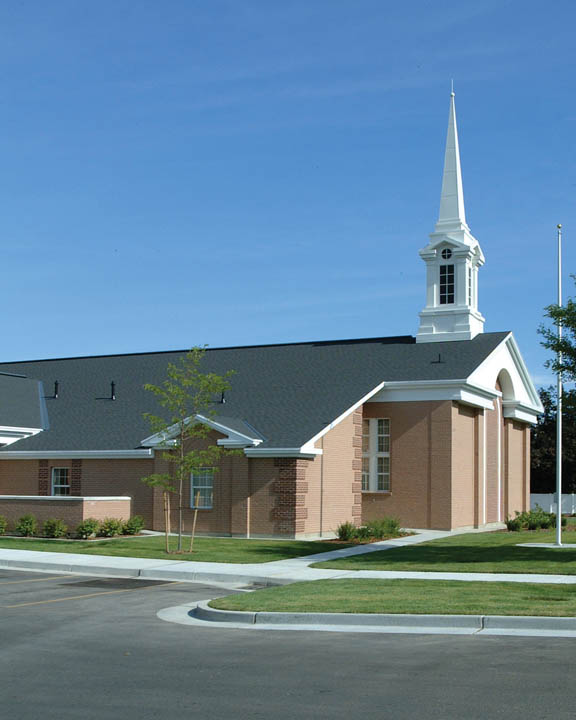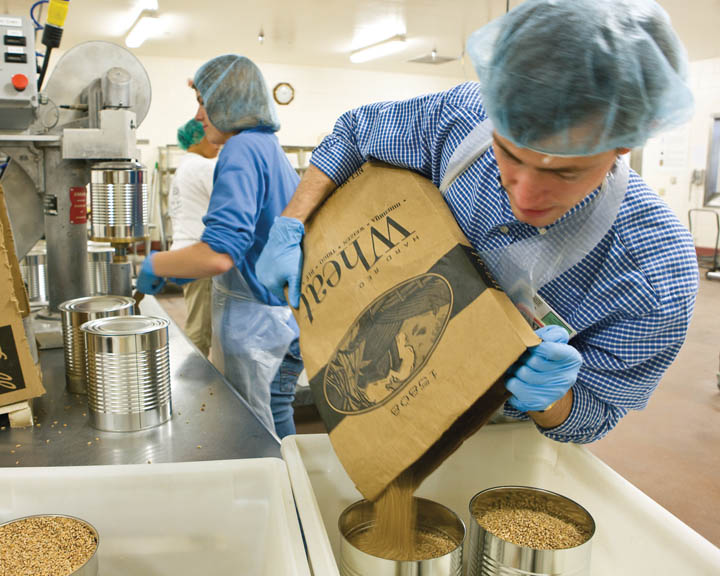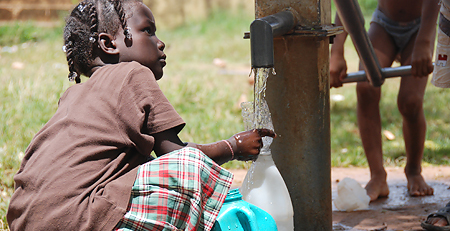Mormons — members of The Church of Jesus Christ of Latter-day Saints — are generous with their resources, including their time. Because the U.S. state of Utah is comprised of 62% Mormons, it has the highest rate of volunteerism in America.
 During the 2011 – 2012 presidential primary in the U.S., Mitt Romney, a devout Mormon, revealed his income for 2010 – 2011, his taxes, and his charitable giving. Romney gives about 15% of his income to charity, most of it going to the Church of Jesus Christ. This is not an unusually high amount for a Mormon to donate, and if hours of service were counted and a value placed on those hours, Mormon donations would be even higher.
During the 2011 – 2012 presidential primary in the U.S., Mitt Romney, a devout Mormon, revealed his income for 2010 – 2011, his taxes, and his charitable giving. Romney gives about 15% of his income to charity, most of it going to the Church of Jesus Christ. This is not an unusually high amount for a Mormon to donate, and if hours of service were counted and a value placed on those hours, Mormon donations would be even higher.
Mormon Tithing
The “law of tithing” is found in the Old Testament.
“Bring ye all the tithes into the storehouse, that there may be meat in mine house, and prove me now herewith, saith the LORD of hosts, if I will not open you the windows of heaven, and pour you out a blessing, that there shall not be room enough to receive it” (Malachi 3:10).
The law of tithing was re-established in this, the last dispensation of time before the Second Coming of Jesus Christ, through revelation to modern prophets, as recorded in the Doctrine and Covenants:
“And after that, those who have thus been tithed shall pay one-tenth of all their interest annually; and this shall be a standing law unto them forever, for my holy priesthood, saith the Lord” (see Doctrine and Covenants, Section 119).
Thus, the definition of “tithing” is one-tenth of a person’s increase. It is up to the individual to determine what that means. Historically, and even in pioneer times in America, tithing was often offered “in kind” — in farm produce or animals. Today, tithing is most often paid with money, much less often in stock, which the Church of Christ usually liquidates. Most Latter-day Saints pay tithing every time they receive a pay check, but some, especially the self-employed, pay yearly after they determine how much they made for the year after deducting business expenses. Mitt Romney pays his tithing using this method.
The payment of tithing is confidential. Sacrifice is a basic law of the gospel, and the Lord promises rich blessings for those who keep the law of tithing — spiritual blessings, plus sustenance in a worldly sense as it is efficacious for us. Because sacrifice is a foundational principle of the gospel of Jesus Christ, those who wish to participate in the higher ordinances of the Mormon temple, must be full tithe-payers. However, this is determined on the honor system. The person makes a simple statement to his or her bishop (like a pastor, but he is not paid) that he or she is a full tithe-payer. There is no force used to get people to pay tithing. It is completely optional, and the only leverage is temple worthiness.
How Mormon Tithes are Used by the LDS Church
A very large chunk of Mormon tithing is used for the buildings of the Church of Jesus Christ, for their construction, updating, and maintenance. Because of the rapid growth of the LDS Church around the world, the Church dedicates a little over one chapel each day.
The desire of the Church is for all of its members to have access to a Mormon temple. In the past many have had to make huge sacrifices to travel long distances to reach a Mormon temple, such a difficult thing for the poor, that most visited the temple just once in a lifetime, in order to seal their family together for eternity. In the 1990’s the Church of Jesus Christ began a temple-building program and engaged in building smaller temples in more places. Forty smaller temples were constructed between 1998 and 2001. The LDS Church also owns and maintains many sacred sites which must be maintained.
Congregational activities are also centrally funded by the Church of Jesus Christ. Because the LDS Church has a lay clergy, servants learn by doing, but the study manuals, leadership manuals, and all other materials are correlated and translated into foreign languages and distributed according to need around the world. At any given time, Sunday schools worldwide are teaching the same Sunday School lesson.
The remarkable missionary program of the Church of Jesus Christ is mostly funded by tithes. Although the over 50,000 full-time Mormon missionaries pay their own monthly expenses, their travel costs, both to the mission and within the mission, are paid by the LDS Church, and mission presidents and area presidents who take years away from their paying vocations receive a living stipend.
The Church of Jesus Christ also has four universities in the United States and seminary and institute programs for religious instruction, some with their own buildings.
Other Mormon Donations
Mormons make other donations in addition to paying tithing. The first Sunday of each month is called “fast Sunday.” Mormons fast for two meals (a full fast lasts for 24 hours), and donate the money they would have spent on food to the poor and needy. Many Mormons donate much more than this value, and all are urged to give “a generous fast offering.” Fast offerings are confidential.
Fast offerings fuel the amazing welfare program of the Church of Jesus Christ, admired by governments the world over for its foundation on self-reliance rather than the dole. All sorts of programs are available to help the poor get on their feet again as they are given temporary assistance in their time of need. Most of this assistance comes through “bishops’ Storehouses.” A bishop’s storehouse looks somewhat like a grocery store and is manned by Mormon volunteers. Mormon volunteers also drive the work that takes place at church-owned dairies, orchards, vineyards, ranches, farms, and canneries, where the food for the storehouses is grown and packaged. The canned goods not only make their way to poor Mormons, but to disaster-ravaged areas of the world.
Humanitarian Aid
The Humanitarian Aid Fund of the Church of Jesus Christ is a separate fund that is so driven by Mormon volunteer labor that 100% of donations received go to aid victims of disaster, poverty, and disease. The LDS Church is often the first on the ground and the last to leave when disaster strikes. In addition to disaster relief, the LDS Church has many ongoing projects around the world. Mormons even donate supplies and then the labor to assemble them into kits for emergency relief. Millions of quilts have been hand-stitched by Mormons for delivery in disaster-stricken areas. The counsel from the LDS Church is to make these quilts durable but also beautiful to lift the spirits of the downtrodden. Individual Mormons carry service a step further by mounting their own charitable projects. You can read more about these at Mormon Church.org.
Perpetual Education Fund
To usher in the twenty-first century, the Church of Jesus Christ established a Perpetual Education Fund to aid returned missionaries in poorer countries in getting a better higher education. As they enter the work force with higher-paying jobs, they repay their loans to aid new students coming up through the ranks.
Is the Mormon Church Wealthy?
The Church of Jesus Christ of Latter-day Saints is small, with only a little over 14 million members worldwide. It relies on volunteerism — there is no paid clergy — because that is how Christ’s primitive church worked; that is His plan. The LDS Church constantly strives to make its members self-reliant and strongly discourages debt. It practices what it preaches — even the temples are paid for with cash. The general authorities of the LDS Church, comprised of the First Presidency (prophet and two counselors) and the Quorum of the Twelve Apostles are called to serve for life (while all other callings are temporary). These must sacrifice their professional goals to serve the Church. If they choose to accept it, they may receive a modest living stipend. These stipends are not paid from the tithes and offerings of the LDS Church but from investments made by the Church. The LDS Church pays full standard taxes on all of its commercial endeavors. The LDS Church has been in the process over the years of divesting itself of most of these, retaining a few that relate to its mission, like Bonneville Broadcasting, through which the general conferences of the Church are broadcast to the world.



